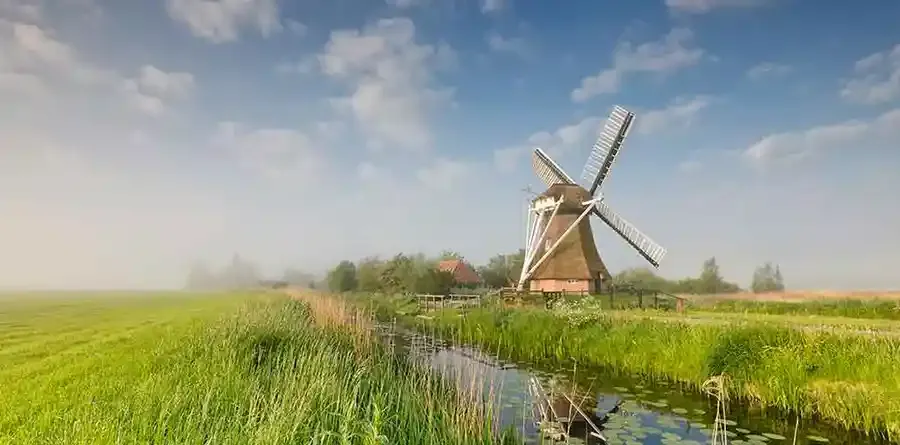Hyundai Motorstudio Senayan Park
Hyundai Motorstudio Senayan Park
Newsroom
The official news from Hyundai Motorstudio Senayan Park and a collection of innovative articles on mobility and sustainability here.
-
6 Benefits of Reforestation for Cleaner Environment
- Hyundai Motorstudio Senayan Park Senayan Park 2022.06.07
-
Trees, along with plants and herbs, have an important role to support the earth. But many trees are starting to disappear due to forest conversion, settlements, and fires.
Reforestation is a concrete solution to restore the forests to function as they should. Even now reforestation has become like the official agenda of various organizations and individuals.What is Reforestation?
Reforestation, also called greening, can be defined as the process of planting trees or an attempt to regrow trees in an area that was previously forest, according to American University. In contrast, afforestation is a term to create forest on a new land that was not previously forest.Especially in areas that often experience fires, reforestation is an important step to restore the forests along with their functions.
During the reforestation process, there are a number of points that must be considered. The types and the number of trees, when to start planting, and so on, can have different impacts on the ecosystem in the area. While new species are able to absorb more carbon, it’s not always the case.
Planting new species is actually more at risk of disease because it is not suitable with the climate, weather, and soil type. Reforestation aims to maintain ecological balance, that's why the trees planted are often the same species as the previous plant.Trees and plants are a necessity because they maintain climate stability. The point is that reforestation is a scientific process that is not limited by planting activities. More than that, reforestation involves knowing the climate, weather, soil, species and ecosystems.6 Benefits of Reforestation for Life
There are many benefits from reforestation. In addition to preserving the environment, reforestation also provides global benefits through structuring ecosystems, reducing emissions and carbon footprints.1. Reduce Carbon
Human life is very threatened because of the amount of carbon dioxide. More smoke from factories and vehicles pollutes the air. Reforestation is the easiest way to improve the air quality that can be breathed. Plants absorb carbon from the air and help lower the temperature.Low carbon means low pollution and low global warming. Loss of vegetation means increasing the earth's temperature, melting glaciers and rising sea levels.Trees are useful in reducing the amount of carbon circulating in the atmosphere through photosynthesis, which will produce oxygen. As a result, the amount of carbon concentration is drastically reduced.2. Lower Global Warming
Plants help reduce carbon in the air and significantly reduce harmful gasses like methane that are responsible for making the earth warmer. Deforestation can be reduced and global warming can be overcome. Forests serve as a natural carbon absorber.3. Restoring the Ecosystem
Deforestation and urbanization contribute to the decline or loss of ecosystems. It is a constant threat to the flora and fauna of any area. Humans have lost many valuable plants, and animals are also facing the threat of mass extinction.Reforestation not only restores forests, but also preserves animals. Besides overcoming the threat of climate change, reforestation can protect endangered animal species. The main habitat of animals is in the forest, and preserving trees is a crucial step in maintaining their existence. Restoring forests means restoring lost habitats and eliminating threats to their inhabitants.4. Prevent Erosion
It has been proven that the loss of trees triggers massive deforestation, which leads to soil erosion. It doesn't end yet, the effects even disrupt agricultural land, trigger landslides, and floods. Erosion occurs because of deforestation, and reforestation can solve this problem.To reverse this situation, reforestation is the key. Tree roots help hold the soil in place, thus preventing the soil from shifting and sliding. Branched tree roots are useful for holding the soil in place so that important nutrients in the soil will not be lost by erosion.Trees also help fertilize the soil through dry leaves and rotting branches. Reforestation is able to prevent the destruction of a habitat due to erosion, while maintaining soil fertility. The water absorption capacity is also getting better so the floods can be prevented.5. Maintain the Water Cycle
Plants are useful in maintaining the water cycle in the soil by absorbing moisture from their roots and leaves. Trees are like natural storage containers for water and reduce aridity.The tree then releases the absorbed water by releasing moisture from its leaves. This process, known as transpiration, helps restore atmospheric humidity and maintains a normal temperature in the surrounding area.6. Boost the Economy
Forests will always be a reliable source of economics. The paper industry has always depended on raw material taken from trees, and cutting wood has sometimes become a permanent job for residents in some areas.As forests are managed properly and planted regularly, it can be a reliable source of timber production. Forests are basically able to provide employment for local people who want to collect forest products and process them into something valuable.




